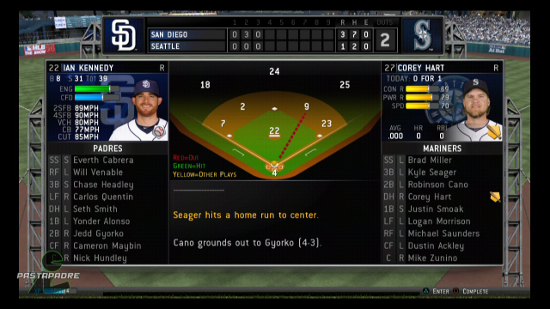Early Assessments of Quick Counts and Player Lock in MLB 14: The Show

SCEA made two time-saving features the most marketed additions for MLB 14: The Show. There is no doubt that the length of time it takes to play games has limited baseball’s potential video game consumer base and even hampered the ability for the most dedicated fans to play to the extent they would like. Of the two options developed for MLB 14 at least one is proving to be a worthwhile option to consider.
Going in Player Lock seemed to have less fanfare than Quick Counts but it works as intended and the benefits are immediately evident. Users can have an influence on the outcome by controlling just a single player while completing a game in as little as 10 minutes. Over the course of a Franchise season the commitment is reduced even further for those who would choose a relief pitcher or single starting pitcher. For teams that don’t have stacked lineups it can be appealing to pick a favorite player and just use them. Whether it’s a pitcher or a position player the games end up requiring less of a time commitment and remain fun to play.
What is lost in using Player Lock is of course the amount of influence on each game. As a starting pitcher you’ll still have a huge impact but as a position player there may be a stretch of games that go by with little production or influence on the outcome. Still it certainly would be easier to go through a season in Franchise mode this way than playing in the traditional manner and in turn feel more involved in doing so than simming large chunks of games to save time.

The Quick Counts feature on the other hand comes across as a complete failure as it damages the spirit and strategy of the games without providing much in return. It may actually be detrimental for novices to attempt and play this way. There’s a feeling of being lost throughout having given up context of the at bats and poor tendencies built through that. The flow of a normal baseball game is completely disrupted by using the feature. As a batter you feel as though you’re swinging blindly and a pitcher you’re just throwing and hoping for the best.
More often that not (it at least seems that way) batters are getting sent up facing two strike counts while pitchers see a batter that already has drawn three balls. That leads to no room for error and a sense of frustration from walking batters or striking out even more often than playing the traditional way. You aren’t digging yourself into those holes but are still expected to get out of them. Games also can quickly feel like they’re spiraling out of control since so many at bats are decided on the first pitch the user sees.
Surprisingly, though obviously the number of pitches in theory are being reduced, the games don’t feel as though they’re going by all that much faster than the norm. It’s definitely cutting out some time but the trade-off is not close to being satisfying enough. One Quick Counts game that was streamed live today took 52 minutes to complete.
That’s still excruciatingly long and it’s not worth giving up things like being able to set up a batter or looking at some pitches while at the plate. Stripping out the presentation (which in that game I mostly skipped through anyway) can speed things up even more but how much is the user willing to give up before it’s not really baseball or The Show any longer?
Offering options of different ways to play will always be welcome and the need to reduce the time investment with baseball games will be something developers continue to consider. There may be no ideal solution however that will be able to avoid sacrificing some of the the strategy and pacing of baseball. It’ll be up to each individual to decide if the benefits in time saved outweigh losing some of the elements that make up the sport.
